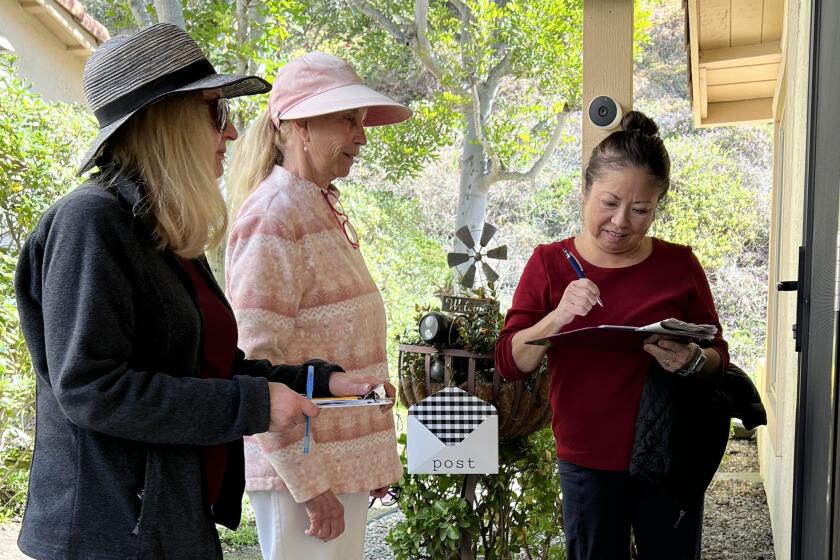San Diego street assessment nears end of road
The City of San Diego is nearing the end of its street assessment program, one undertaken to determine the condition of all roadways so officials can create a plan for their repair.
City Councilman Mark Kersey and the Rancho Bernardo News Journal were given an opportunity on Aug. 6 to see in-person how the contractor, Colorado-based Cartegraph, is assessing all of the city’s roughly 2,500 miles of roads. The endeavor is costing the city $560,000, included in the fiscal year 2015 budget.
“This is a great example of how technology can be used to help solve some of our biggest civic issues,” Kersey said after riding in the Cartegraph truck along Rancho Bernardo roads. “We previously assessed our city streets in 2011. This updated information will be critical not only to see how far we’ve come in our efforts to make street repairs a higher priority, but also to identify streets that need the most attention going forward.”
Ben Culbertson, a Cartegraph senior field technician, said the survey work began in late January and would likely be done by this month. The crew has not been in San Diego continuously.
One truck with a camera tower took panoramic imagery of all streets, so it could form a 360-degree image similar to that found on Google Maps’ street view system.
The other truck, which Culbertson and Field Technician Ryan Bennett operated, was able to record street conditions and make measurements of street flaws and rut depths “down to millimeter accuracy,” Culbertson said. Equipment recorded the latitude and longitude of the pothole, crack or other flaw. One pass was needed for streets with a width of three or fewer lanes, while wider streets required a second trip to assess its curb-to-curb condition.
“Every area has good and bad roads,” Culbertson said after driving almost every street in the city. He said asphalt worn down to gravel condition and alligator cracks are among the biggest factors when scoring a road’s condition.
“(Gravel) makes the surface very unstable,” he said. “It can’t be repaired and needs to be completely (replaced).”
By year’s end all the data will likely be analyzed and a report given to the city. Kersey is chairman of the City Council’s Infrastructure Committee, which will receive the report.
In late July, TRIP — a Washington, D.C.-based transportation research group — ranked the San Diego area as eighth-worst in the nation for bad roads. It said 51 percent of roads were in “poor condition.” It also ranked the area ninth for additional costs to motorists due to bad roads, saying the annual average for vehicle expenses was $843.
Last month the city began a $74 million effort to fix 300 miles of roadways during this fiscal year. Mayor Kevin Faulconer has set a goal of repairing 1,000 miles of streets over the next five years. In the past five out of seven fiscal years around 175 miles of roads were repaved or slurry-sealed.





